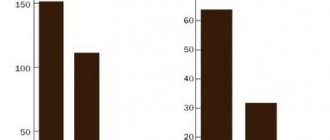Buy Metronidazole Avexima vaginal suppositories 500 mg No. 10 in pharmacies
Instructions for use
Metronidazole sup. vag. 500 mg No. 10
Dosage forms suppositories 500 mg Synonyms Bacimex Klion Metrogyl Metronidazole Nycomed Rosamet Rosex Trichopex Trichopol Trichosept Flagyl Efloran Group Drugs for the treatment of trichomoniasis, amoebiasis and other protozoal infections International nonproprietary name Metronidazole Composition Active substance - metronidazole. Manufacturers Altfarm (Russia)
Pharmacological action Antibacterial, antiprotozoal (trichomonacid), antiulcer, antialcohol. The nitro group of the molecule, which is an electron acceptor, is integrated into the respiratory chain of protozoa and anaerobes, which disrupts the respiratory processes and causes cell death. In addition, in some species of anaerobes it has the ability to suppress DNA synthesis and cause its degradation. After oral administration, it is quickly and completely absorbed from the gastrointestinal tract. The maximum concentration is reached after 1-2 hours. Penetrates well into tissues and body fluids, creating bactericidal concentrations in saliva, seminal fluid, and vaginal secretions; penetrates the BBB and placental barriers and is secreted into breast milk. With repeated doses it accumulates. Subject to biotransformation in the liver. Excreted by the kidneys and intestines, about 20% unchanged. The spectrum of action includes protozoa: Trichomonas vaginalis, Entamoeba histolytica; anaerobic gram-negative microorganisms: bacteroids, including the Bacteroides fragilis group (B. fragilis, B. caccae, B. uniformis, B. distasonis, B. ovatus, B. thetaiotaomicron, B. vulgatus); fusobacteria Prevotella (P. bivia, P. buccae, P. disiens); anaerobic gram-positive rods: Clostridium, Eubacterium; anaerobic gram-positive cocci: Peptococcus, Peptostreptococcus; Trichomonacid effect is observed at a drug concentration of 2.5 μg/ml for 24 hours. Shows activity against Helicobacter pylori. Side effects Headache, dizziness, syncope, ataxia, disturbances of consciousness, epileptic seizures, neutropenia (leukopenia), nausea, vomiting, abdominal pain, diarrhea, unpleasant metallic taste, erythematous rashes, skin itching, dark urine discoloration, allergic reactions, thrombophlebitis (after intravenous administration). Indications for use Amebiasis, trichomoniasis, giardiasis, giardiasis, intra-abdominal infections (peritonitis, abscess), anaerobic infections of bones and joints, skin and soft tissues, female genital organs (endometritis, tubo-ovarian abscess), central nervous system (meningitis, brain abscess), lower respiratory pathways (pneumonia, empyema, lung abscess), endocarditis, pseudomembranous colitis, Helicobacter pylori eradication, chronic alcoholism, prevention of postoperative anaerobic infection. For external and local use: rosacea and vulgar acne, bacterial vaginosis, long-term non-healing wounds, trophic ulcers. Contraindications Hypersensitivity (including to other nitroimidazole derivatives), pregnancy, lactation, childhood (excluding cases of amoebiasis). Directions for use and dosage : Intravaginal: 500 mg at night for 10 days. Overdose Symptoms: nausea, vomiting, ataxia, in severe cases - peripheral neuropathy and epileptic seizures. Treatment: symptomatic; There are no specific antidotes. Interaction Enhances the effects of indirect anticoagulants and lithium salts. Phenytoin and phenobarbital reduce the effect (due to activation of the liver microsomal system and accelerate metabolism and excretion), and cimetidine increases (inhibits the enzymatic systems of the liver and, as a result, slows down biotransformation). Incompatible with alcohol (when taken together, an Antabuse-like syndrome develops). Special instructions When treating with metronidazole, excessive development of fungal flora of the vagina (candidiasis) is sometimes observed, which requires the use of antifungal drugs. Storage conditions: In a cool, dry place, protected from light. List B.
METRONIDAZOLE OZONE tab. 500 mg No. 20
special instructions
Since simultaneous use of metronidazole with alcohol (ethanol) may have an effect similar to that of disulfiram (skin hyperemia, flushing of the skin, vomiting, tachycardia), patients should be warned that during treatment and for at least one day after end of taking the drug During the treatment period, you should not drink alcoholic beverages or medications containing ethanol.
The indications for long-term use of metronidazole should be carefully weighed and, in the absence of strict indications, its long-term use should be avoided. If, in the presence of strict indications, the drug is used for a longer period than is usually recommended, treatment should be carried out under the monitoring of hematological parameters (especially leukocytes) and adverse reactions, such as peripheral or central neuropathy (paresthesia, ataxia, dizziness, convulsions), in the event of which treatment must be stopped.
When treating trichomonas vaginitis in women and trichomonas urethritis in men, it is necessary to abstain from sexual intercourse. Simultaneous treatment of sexual partners is mandatory. Treatment should not be stopped during menstruation. After treatment for trichomoniasis, control tests should be carried out during 3 consecutive cycles before and after menstruation.
Metronidazole should be used with caution in patients with hepatic encephalopathy or in patients with acute or chronic diseases of the central or peripheral nervous system due to the possible risk of neurological deterioration.
Severe hepatotoxicity/acute liver failure (including fatal cases that occurred very rapidly after initiation of treatment) has been reported in patients with Cockayne syndrome when treated with systemic metronidazole. In this category of patients, metronidazole should be prescribed only after a careful assessment of the benefit/risk ratio and only in the absence of alternative treatment.
Liver function tests should be performed before starting treatment, during therapy and after its completion until liver function tests reach normal values, or until the initial values of these indicators are achieved. If liver function indicators are significantly exceeded during treatment, then use of the drug should be discontinued.
Patients with Cockayne syndrome should be advised to immediately report the development of any symptoms of potential liver damage to their physician and discontinue use of metronidazole.
Cases of severe bullous skin reactions such as Stevens-Johnson syndrome, toxic epidermal necrolysis or acute generalized exanthematous pustulosis have been reported after taking metronidazole. If symptoms or signs of these diseases develop, treatment with Klion should be stopped immediately.
It must be taken into account that metronidazole can immobilize treponemes, which leads to a false-positive Nelson test.
Long-term use of metronidazole must be carefully justified due to possible mutagenicity and carcinogenicity.
Impact on the ability to drive vehicles and machinery
Considering the risk of developing such adverse reactions as confusion, dizziness, hallucinations, visual impairment, it is recommended during treatment to refrain from driving or engaging in other potentially hazardous activities that require increased concentration and speed of psychomotor reactions.
Metronidazole Nycomed
Concomitant use of metronidazole with the following drugs is not recommended
:
Alcohol, including drugs containing alcohol
Possible mechanism: Metronidazole inhibits acetaldehyde metabolism.
Result: disulfiram-like reaction (redness of the skin, vomiting, feeling hot, rapid breathing and tachycardia). Concomitant use should be avoided.
Amiodarone
Possible mechanism: Metronidazole inhibits the metabolism of amiodarone.
Result: Increased risk of developing cardiotoxic effects (QT interval prolongation, torsade de pointes (TdP), cardiac arrest).
Busulfan
Metronidazole may increase plasma concentrations of busulfan and, consequently, increase its toxicity.
Disulfiram
Possible mechanism: unknown.
Result: Concomitant use with disulfiram can lead to the development of various neurological symptoms (the interval between prescriptions is at least 2 weeks).
Co-administration of metronidazole with the following drugs should be done with caution
:
Ergot alkaloids (eg, ergotamine)
Possible mechanism: Metronidazole inhibits the activity of cytochrome P450 3A4 and, as a result, slows down the metabolism of ergot alkaloids.
Result: Increased risk of developing ergotism (nausea, vomiting, vasospastic ischemia).
Warfarin
Possible mechanism: Metronidazole inhibits the metabolism of warfarin.
Result: Increased effects of warfarin and, as a result, the risk of bleeding.
When using both drugs simultaneously, the prothrombin time should be determined at short intervals and the dose of warfarin adjusted, if necessary.
Vecuronium
Result: Metronidazole enhances the effect of vecuronium.
Carbamazepine
Possible mechanism: Unknown. The metabolism of carbamazepine may be slowed down under the influence of metronidazole.
Result: Metronidazole may increase serum concentrations of carbamazepine and therefore increase its toxicity.
Lithium preparations
Possible mechanism: Decreased renal clearance of lithium.
Result: Increased plasma lithium concentration and the risk of toxic effects of lithium (weakness, tremor, severe thirst, confusion).
Tacrolimus
Possible mechanism: Metronidazole inhibits the metabolism and elimination of tacrolimus.
Result: Metronidazole may increase the plasma concentration of tacrolimus and, as a result, increase the risk of developing its toxic effects (nephrotoxicity, hyperglycemia, hypercalcemia).
Phenytoin
Possible mechanism: Suppression of phenytoin metabolism or increased microsomal metabolism of metronidazole.
Result: Increased risk of developing toxic effects of phenytoin and decreased plasma concentrations of metronidazole.
Phenobarbital
Possible mechanism: Accelerated metabolism of metronidazole in the liver.
Result: Decreased plasma concentrations of metronidazole.
Fluorouracil
Possible mechanism: Reduced clearance of fluorouracil.
Result: Increased concentration of fluorouracil in the blood serum, as well as the risk of developing its toxic effects (granulocytopenia, anemia, thrombocytopenia, stomatitis, vomiting).
Cholestyramine
Possible mechanism: Decreased absorption of metronidazole.
Result: Decreased effectiveness of metronidazole.
Cyclosporine
Possible mechanism: Possible increase in the concentration of cyclosporine in the blood under the influence of metronidazole. If simultaneous administration of metronidazole and cyclosporine is necessary, the concentration of cyclosporine and creatinine in the blood serum should be determined at short intervals.
Cimetidine
inhibits the metabolism of metronidazole, which may lead to an increase in its concentration in the blood serum and an increased risk of side effects. Metronidazole enhances the effect of indirect anticoagulants, which leads to an increase in the time of prothrombin formation.
It is not recommended to combine metronidazole with non-depolarizing muscle relaxants (vecuronium bromide).
Sulfonamides enhance the antimicrobial effect of metronidazole.
Laboratory research
Taking metronidazole may affect certain blood test parameters, such as the activity of aspartate aminotransferase (AST), alanine aminotransferase (ALT), lactate dehydrogenase (LDH), hexokinase, and triglyceride levels. The values of these parameters can be reduced to zero.


